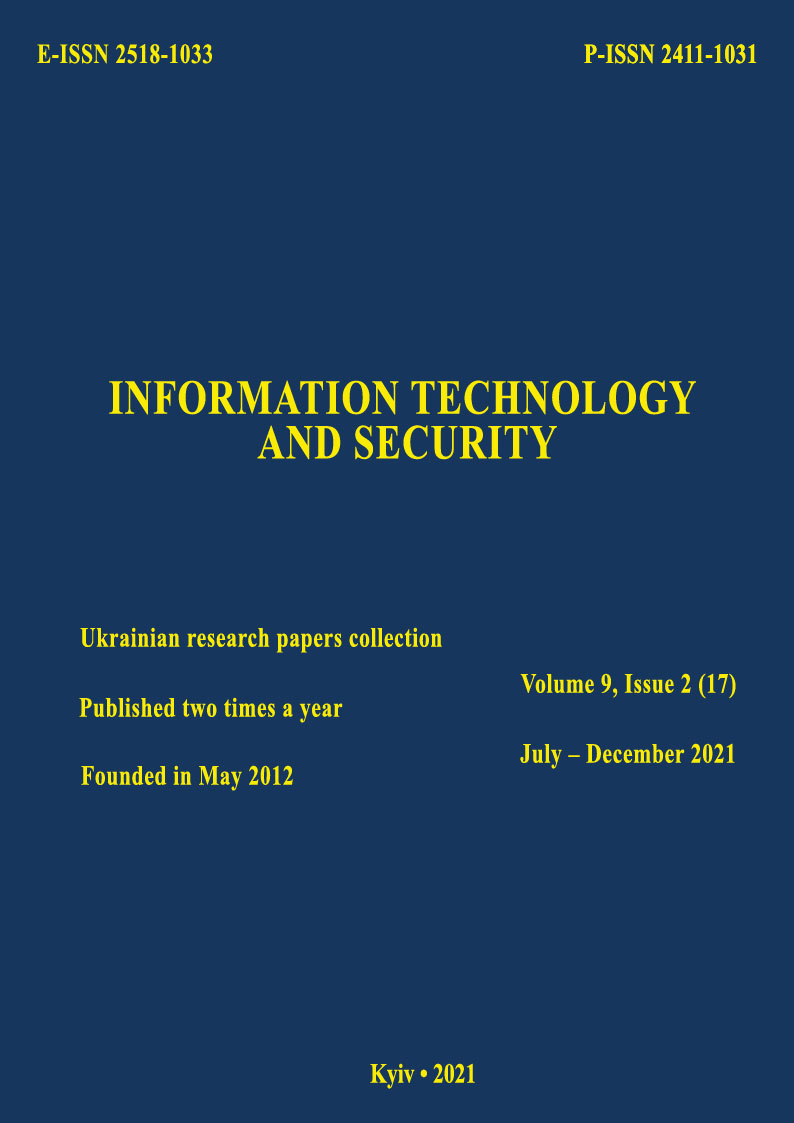Approach to diagnosing a digital devices on a complete verification test
DOI:
https://doi.org/10.20535/2411-1031.2021.9.2.249910Keywords:
digital circuit, technical state, malfunction, verification test, diagnostic test, digital device modelAbstract
The results of research on the possibility of using a complete test to solve a current scientific and technical problem, namely, the localization of faults in a digital combination device. The purpose of this study is to increase the efficiency of diagnostic support of modern digital devices. Faults that do not convert a circuit from the category of digital circuits and distort only the functions of logic elements are considered. Such faults include faults such as fixing the values of signals in 0 and 1 at the inputs and outputs of the circuit and inputs and outputs of logic elements. The task of building a diagnostic test currently has no solution that could be recommended for practical use. A new approach to fault localization in a digital device is proposed, based on the use of a complete verification test together with deductive simulation, which reduces the number of suspected faulty technical states. The construction of a complete verification test is based on the use of methods for determining the input signals, which distinguish a pair of technical states of the digital circuit. Describes a diagnostic procedure in which the use of a full test can significantly reduce the amount of diagnostic information required to troubleshoot a digital device. The proposed procedure can be recommended for the construction of diagnostic software for digital circuits at the stages of their design and operation. A structural scheme of a software and hardware device for implementing a diagnostic procedure is also proposed. The result of the study is the conclusion that the use of a complete test significantly reduces the amount of diagnostic information and, accordingly, significantly increases the efficiency of devices of determining the technical condition of digital devices. The results of the research are demonstrated on the example of a combinational scheme C17 ISCAS. It is shown that the full verification test localizes in this scheme all constant faults of multiplicity 1.
References
P. P. Parkhomenko, and E. S. Soghomonyan, Fundamentals of technical diagnostics. Moscow, Russia: Energy, 1981.
D. V. Efanov, V. V. Sapozhnikov, and V. V. Sapozhnikov, “Summation codes with fixed values of the multiplicity of detected monotonic and asymmetric errors for technical diagnostics systems”, Automation and telemechanics, vol. 6, рp. 121-141, 2019, doi: https://doi.org/10.1134/S0005231019060072.
A. Yu. Drakin, A. N. Shkolin, and A. A. Pugachev, “The use of simulation models when controlling the parameters of integrated circuits”, Don's Engineering Gazette, № 3, 2019. [Electronic resource]. Available: http://ivdon.ru/ru/magazine/archive/n3y2019/5849. Accessed on: Aug. 21 ,2021.
V. I. Khakhanov, V. Garibi, E. I. Litvinova, and A. S. Shkil, “Cubit data structures of computing devices”, Electronic modeling, v. 37, no. 1, pp.76-99, 2015.
V. V. Kiselev, and N. A. Suvorov, “Method for diagnostics of digital circuits with programmable FPGAs at the manufacturing stage”, Electrical engineering, information technology, control systems. Vesnik PNRPU, no. 14, pp. .97-107, 2015.
O. A.Uspensky, V. M. Kulikov, V. V. Ryabtsev, and S. V. Mitin, “Methods of constructing complete verification tests for digital devices”, Collection of scientific works of VITI, no. 3, pp. 100-110, 2020.
Downloads
Published
How to Cite
Issue
Section
License
Copyright (c) 2021 Information Technology and Security

This work is licensed under a Creative Commons Attribution 4.0 International License.
The authors that are published in this collection, agree to the following terms:
- The authors reserve the right to authorship of their work and pass the collection right of first publication this work is licensed under the Creative Commons Attribution License, which allows others to freely distribute the published work with the obligatory reference to the authors of the original work and the first publication of the work in this collection.
- The authors have the right to conclude an agreement on exclusive distribution of the work in the form in which it was published this anthology (for example, to place the work in a digital repository institution or to publish in the structure of the monograph), provided that references to the first publication of the work in this collection.
- Policy of the journal allows and encourages the placement of authors on the Internet (for example, in storage facilities or on personal web sites) the manuscript of the work, prior to the submission of the manuscript to the editor, and during its editorial processing, as it contributes to productive scientific discussion and positive effect on the efficiency and dynamics of citations of published work (see The Effect of Open Access).

